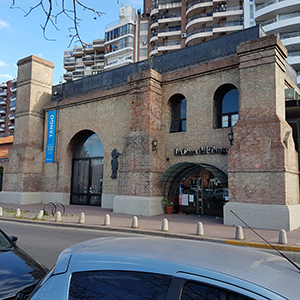On both sides of urban performing arts: two cases of cultural territorialization of the riverside landscape in Rosario
DOI:
https://doi.org/10.35305/23626097v7i12.245Keywords:
performing arts, riverside landscape, territorialization, cultureAbstract
This article aims to analyze the territorialization of Paraná’s riverside landscape by means of two case studies. They illustrate a particular relationship between performing arts and the central riverbank of Rosario. The process took place between the end of the 20th century and the beginning of the 21st century and relied on the recycling of railway structures. The hypothesis of this work is that the cultural production of the riverside through performing arts was subjected to hybridization, integration, negotiation, tension and conflict among diverse cultural agents (they were individual, communal/autonomous, institutional and governmental). The first case reconstructs the creation of Casa del Tango in a railway warehouse after the eviction of an autonomous cultural center largely dedicated to circus performing arts: Galpón Okupa. The second case analyzes the creation of Escuela Municipal de Artes Urbanas which is mainly focused on performing arts in a port warehouse that had once been the setting of a semiautonomous squatting. Both developments seek to highlight the problems of urban cultural governmentality.
Downloads
Metrics

Published
How to Cite
Issue
Section
License
Open access policy
A&P Continuidad is a non-profit and open access publication. According to Mexico Declaration on Cultural Policies, the journal distribution is submitted to Creative Commons Attribution-Noncommercial-ShareAlike 4.0 International Public License (CC BY-NC-SA). “Neither the commercial use of the original work nor that of the possible derivative works are allowed. The distribution of derivative works should be submitted to the license regulating the original work. This license is not free.”
A&P Continuidad authorizes the partial or full reproduction of texts and graphs provided that the source is cited. Authors are exclusively responsible for the criteria expressed in the articles which do not necessarily reflect the opinion of the Editorial Committee or that of the Direction Board. The copyright of the published articles pertains to their authors or publishers.
Transfer of rights
The acceptance of an article to be published implies the author’s transfer of rights to the journal. Authors continue to have the right to use the material in future books or publications, approve or veto the republication of their works as well as the rights related to patents or other rights. Transfer of rights form may be downloaded here.























 This OJS site and its metadata are under a
This OJS site and its metadata are under a 

